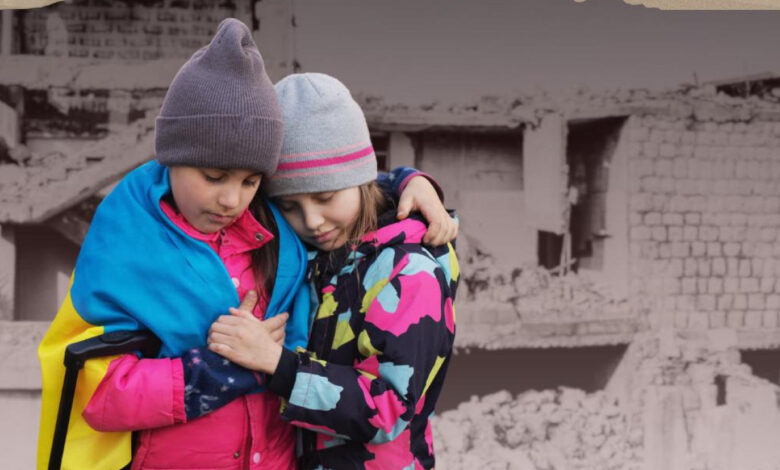Almost every fifth child in the world lives in war zones: UNICEF

In today’s world, millions of children are forced to live in war zones. This is a reality that destroys their childhood, deprives them of opportunities and threatens their very existence. Ukrainian children, who have been living in the conditions of a full-scale war for the third year in a row, are a vivid example of this tragedy. UNICEF said that almost one in five children in the world live in war zones. At the same time, the share of children living there has doubled: from 10% in the 1990s to almost 19% in the 2020s. About this writes The Guardian.
The UNICEF organization in its report emphasizes that the modern world is currently experiencing one of the worst periods in its history in terms of the impact of war on the child population. More than 473 million children in various parts of the world are exposed to the most severe forms of violence, and this number is the highest since the Second World War. Back in the 1990s, the share of children living in conflict zones was about 10%, but by the 2020s this figure has doubled.
The data for 2023 are particularly alarming: the UN recorded almost 33,000 gross violations of children’s rights. Such violations include physical violence, loss of access to education, threats to life and health due to unavailability of medical care, as well as psychological injuries that leave a lifelong mark.
For example, over 45,000 people died in the Gaza Strip during the 15-month conflict, almost half of whom were children. Ukraine also remains among the countries with the highest rates of child loss. In 2024, the number of affected Ukrainian children exceeded the figures of the previous year, and UNICEF forecasts for 2025 do not promise improvement.
“The year 2024 has become one of the worst in the modern history of UNICEF in terms of the number of affected children and the scale of the impact on their lives”, – said the executive director of UNICEF Catherine Russell.
In addition to physical and psychological trauma, children in conflict zones often face limited access to education. More than 52 million children in such regions do not have the opportunity to study. In many countries, schools have been destroyed or used as shelters. Ukraine, Syria, DR Congo, Gaza and Sudan are among the most affected regions in this context. Losing access to education creates a gap between these children and their peers living in peaceful settings and significantly limits their future opportunities.
According to a study by the organization War Child, 96% of children in Gaza expressed fear of death, and almost half, due to deep traumatic experiences, admitted that they wanted to die.
The problem of health care is no less important. In 2024, 40% of children who did not receive routine vaccinations lived in conflict zones. There was even a polio epidemic in Gaza, the first in 25 years. It was only thanks to partial ceasefires that most of the children in the region were vaccinated.
In addition, the food crisis threatens the lives of hundreds of thousands of children in conflict regions. More than half a million people in five countries are on the verge of starvation. War destroys not only infrastructure, but also agriculture, on which the life of many communities depends.
“Children in war zones are fighting for survival every day, losing their childhood. The world has a responsibility for these children and cannot make them victims of uncontrolled conflicts.” — said Kathryn Russell.
UNICEF calls on the international community to take immediate action. Children living in conflict zones cannot protect themselves, and their rights and future depend on global solidarity and decisive action. As the executive director of UNICEF, Catherine Russell, emphasizes, the world has an obligation to protect these children, preventing them from becoming hostages of war. 2025 should be a year of change, when attention to the needs of children in conflict zones will become a priority for all humanity.





